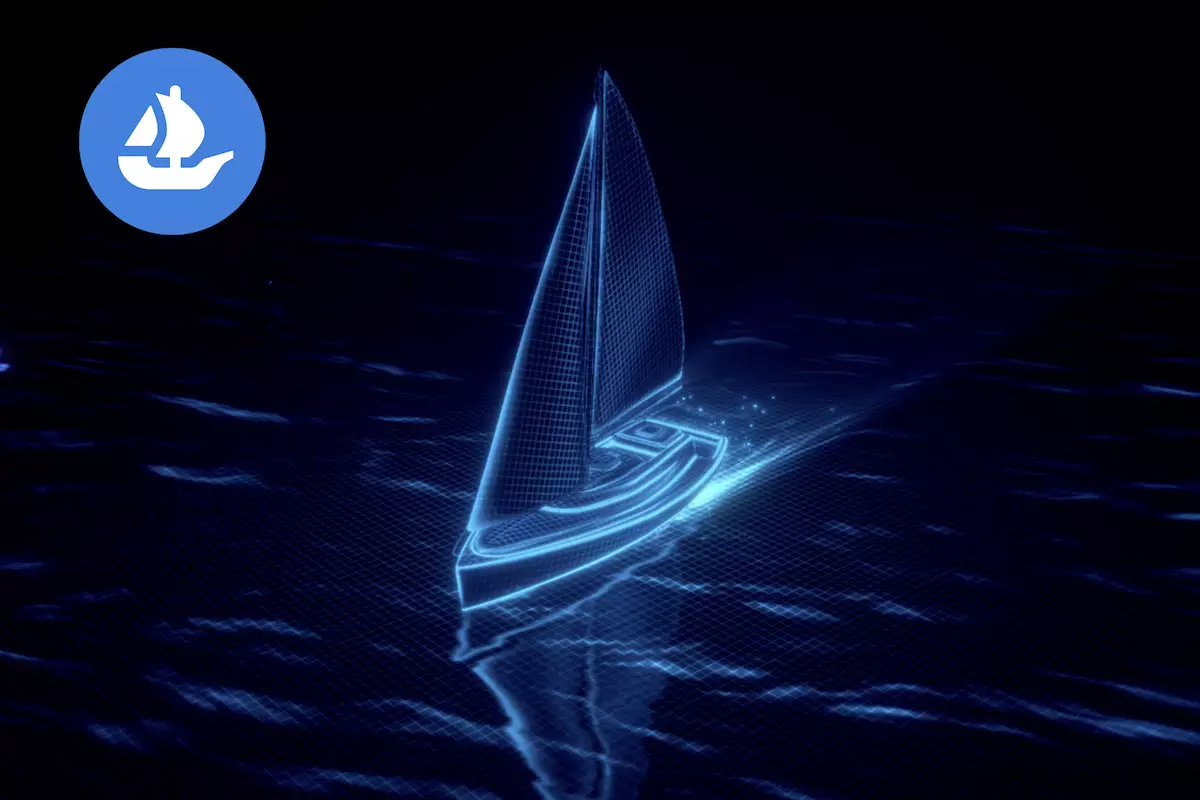OpenSea, a name synonymous with the rapid rise of non-fungible tokens (NFTs), has carved itself a unique space in the digital economy. Initially unveiled in the early days of NFT trading, OpenSea distinguished itself by simplifying the user experience for listing, discovering, and trading digital collectibles. This ease of use propelled the platform into a remarkable leadership position, with OpenSea commanding approximately 90% of the NFT trading volume by 2022. However, in the fast-paced world of cryptocurrency and digital assets, success demands continuous innovation. As competing platforms emerged with aggressive incentives, OpenSea’s market share began to dwindle, forcing the platform to adapt or risk irrelevance.
In response to the encroaching competition, OpenSea made a strategic acquisition in 2023, purchasing the Gem NFT platform and subsequently rebranding it as OpenSea Pro. This transition marked a pivotal moment in the company’s history, as it sought to not just retain its user base but also expand it. The integration of the Gem platform came with its own set of perks, notably the distribution of Gemesis NFTs to existing Gem users through an airdrop. This move, initially perceived as a simple incentive, would prove pivotal in the rollout of OpenSea’s new OS2 platform.
Fast forward to 2025, and Gemesis NFT holders find themselves at the vanguard of the OS2 private beta, having had their wallets captured by OpenSea via a blockchain snapshot. This development has sparked considerable discourse within the NFT community, particularly among high-volume traders who feel overlooked due to their lack of a Gemesis NFT, despite significant trading activity on OpenSea. While OpenSea reassures its loyal users that they have not been forgotten, a clear roadmap for future access remains unclear, highlighting a gap that needs to be addressed.
Amidst the backdrop of increasing user dissatisfaction, the OS2 platform has generated a buzz with its introduction of a new Experience Points (XP) system. Under this system, users earn XP for various activities, including listing NFTs, making offers, or participating in community feedback on platforms like Discord. This strategy mirrors what competitors like Blur have successfully implemented, aiming to revitalize user engagement and create a sense of gaming-like participation.
By incentivizing activity, OpenSea hopes to lure back traders who may have shifted to competing platforms. However, the crux of the enthusiasm around OS2 lies in whether these experience points could evolve into tradable tokens, generating tangible financial value. OpenSea has historically refrained from introducing its own token, but the rumors swirling about a potential token airdrop have gripped the community. The prospect alone has fueled a fervent speculation engine, with users keenly awaiting confirmation or denial from OpenSea.
Challenges and Future Prospects
The NFT landscape has transformed dramatically over the past year, driven by new entrants like Blur and Magic Eden. These platforms have not only disrupted OpenSea’s dominance but also introduced token mechanics that have drawn users away. The pressure on OpenSea intensified further when it had to lay off a significant portion of its workforce, likely to reallocate resources towards enhancing OS2.
The challenge ahead for OpenSea lies in striking a balance between enticing new users while respecting and rewarding the loyalty of its existing community. The ongoing private beta invitations and user feedback will be crucial as OpenSea refines its offering. A successful OS2 launch could redefine interactions within the NFT marketplace, fostering deeper engagement among traders and collectors alike.
In vying for the hearts and wallets of NFT enthusiasts, OpenSea stands at a crossroads filled with opportunities and uncertainties. The introduction of OS2—with its focus on user engagement and potential for future tokenization—could very well mark a renaissance for the platform. As Gemesis holders reap the benefits of their early support, others remain on the edge, eagerly anticipating the next wave of innovations and invitations. Whether OpenSea can reclaim its prominent position within the NFT arena and adapt to the changing tides will ultimately depend on its ability to listen to its community and navigate the evolving landscape of digital assets. As the NFT journey continues, all eyes remain fixated on OpenSea to see how it will mold the future of this dynamic marketplace.














